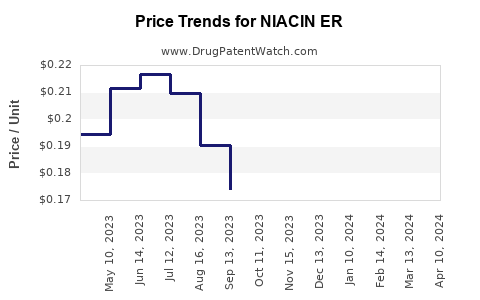Drug Price Trends for NIACIN ER
✉ Email this page to a colleague

Average Pharmacy Cost for NIACIN ER
| Drug Name | NDC | Price/Unit ($) | Unit | Date |
|---|---|---|---|---|
| NIACIN ER 750 MG TABLET | 68180-0222-01 | 0.35393 | EACH | 2024-11-20 |
| NIACIN ER 1,000 MG TABLET | 00093-7394-86 | 0.16489 | EACH | 2024-11-20 |
| NIACIN ER 1,000 MG TABLET | 00093-7394-98 | 0.16489 | EACH | 2024-11-20 |
| NIACIN ER 1,000 MG TABLET | 47335-0613-81 | 0.16489 | EACH | 2024-11-20 |
| >Drug Name | >NDC | >Price/Unit ($) | >Unit | >Date |


